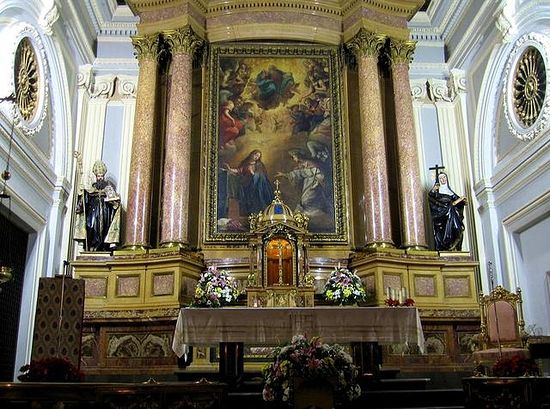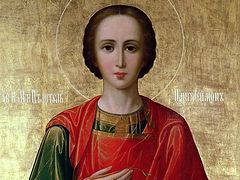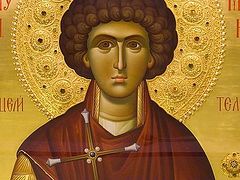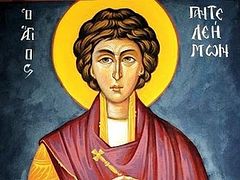 Icon of St. Panteleimon (Saint Catherine's Monastery, Mount Sinai). Photo: wikipedia.org
Icon of St. Panteleimon (Saint Catherine's Monastery, Mount Sinai). Photo: wikipedia.org
In the royal convent of the Incarnation of the Lord in Madrid is preserved one of the most famous and venerated shrines of the Christian world: the blood of Holy Great Martyr and healer Panteleimon, which becomes liquid every year on July 27 (his commemoration day according to the Gregorian calendar).
The blood, which otherwise remains in a congealed state throughout the year, becomes liquid without any human intervention, just like the blood of the holy hieromartyr Januarius. This miracle in Madrid takes place on the eve of Western church’s feast day of St. Panteleimon’s martyric death, July 26. There is likewise a similar miracle with St. Panteleimon’s blood that takes place on the same day in Ravello, Italy.
This is what has happened from the time the phial with the blood of St. Panteleimon was brought to the convent 1616. Between 1914 and 1918, while the First World War was on, as well as in 1936, when the civil war broke out in Spain, this miracle didn’t happen.
Every year the faithful come to the convent in order to honor the holy shrine, and the simply curious come in order to observe this miraculous manifestation. Since 1933 it has been forbidden to physically venerate the holy blood. The miracle can be watched on a television system. This measure became necessary in order to preserve the holy shrine.
After the holy great martyr and healer Panteleimon was beheaded, one Christian gathered some of his blood and other of the saint’s remains. The blood was kept in a glass phial. The holy object had apparently at some time come into the reliquary of the Roman popes, seeing as it had been gifted by Pope Paul V (1605–1621) at the beginning of the seventeenth century to Juan Zúñiga, the viceroy to the king of Spain and Naples. Juan Zúñiga’s wife then gifted the holy object to the royal monastery of the Incarnation of the Lord in Madrid, because the couple’s only daughter, Alionse, entered that monastery in 1611. The convent, located in the heart of Madrid, is still functioning to this day, and a closed order of Roman Catholic nuns live and pray in it.






